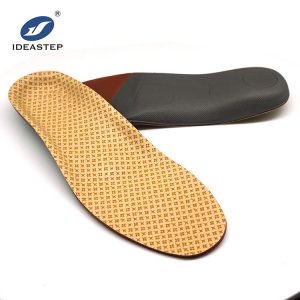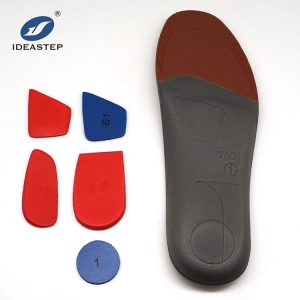Overpronation orthotics
Over-pronation and pronation Pinterest’s percentage Over-pronation, commonly known as flat foot, occurs when the arch of the foot rolls forward while walking. When a person transitions from walking to walking, the weight is moved from the heel to the pads of the foot. It can also happen while standing, referring to the height of the arch of the foot.

When the foot slides inward toward the bow, this is known as overpronation, and it can result in a variety of ailments. Overpronation can cause the bow to collapse, plantar fasciitis, inefficiency, and pain throughout the movement chain. When the foot glides forward, when you push off during movement, or when you take a step, you have overpronation.
Overpronation can be countered by adding a firm, supportive sole to your shoes, which will improve your alignment and efficiency. We propose the Tread Labs Ramble Insole if you’re fatigued and want to make your shoes more comfy.
A set of supportive shoe insoles known as orthotics or orthopedic insoles can be used to treat flat feet with falling arches and overpronation. Men and women in sports who deal with flat feet or have other frequent foot ailments like bone spurs can benefit from orthopaedic insoles like the Physix Gear. For flat feet that don’t want to slip out of their shoes, an insole with moderate arch support is suitable.
Treatment can result in a variety of walking injuries, so it’s critical to diagnose and treat the problem, especially if it’s causing discomfort. When the big toe or second toe is overworked or kicked, those who are overstressed experience pain and tiredness, especially if their weight is unevenly distributed. During training, overpronation can cause foot damage, as well as ankle problems and shin splints.
Over-susceptible people also have instability in their feet and are more likely to get knee pain and shin splints. If your feet are overworked, you will notice that they roll as you walk. Shin splints, heel pain, bunion inflammation, plantar fasciitis, IT ligament syndrome, back pain, and tendinitis can all occur at a young age and may occur without intervention later in life, and a person with a prominent arch may experience an increase in diseases like shin splints, heel pain, bunion inflammation, plantar fasciitis, IT ligament syndrome, back pain, and tendinitis.

When purchasing a new pair of shoes, consider bow support, especially if you require additional cushioning or suffer from foot pain. It’s crucial to choose robust, supportive footwear regardless of your other shoe or boot preferences. When you bend down in your shoes, they can be overly flimsy and cause damage.
If the shoe lacks bow support, a supportive insole can be added to the orthosis to help with the proper support. When walking or running, an insole gives the foot stability and control, prevents the foot from rolling, and keeps the foot in the proper posture. The insole of PowerSteps Original Full Length Orthotics produces stability, which aids in keeping your foot in a natural position when walking.
The Easyfeet Plantar Fasciitis Arch Support Insole has a unique thermoplastic polyurethane hard bow design. The Easyfeet bow support soles are solid and durable, giving support and pain relief for the heel and plantar fascia, unlike other patented insoles made of conventional polyurethane that lose form with time. With a heel cradle that keeps the foot in place and a semi-rigid bow support that offers the foot more support and promotes a healthy gait, the PowerStep Original Orthopedic Insole is our best choice for overpronation.
Discover PowerStep’s full line of orthopedic insoles to relieve and prevent over and under pronation discomfort. The full-length insole features flexible bow supports as well as a lightweight bow support shell.
You may improve your alignment and efficiency at every stride by wearing shoes with an overpronated insole. Insoles without a prescription When purchasing an overpronation insole, keep in mind that many over-the-counter options do not provide the firm support required to reduce pronation. The best in Sole for Overpronation features a fixed arch support and a variety of arch height settings.
An orthosis is a device that is worn to help those who have difficulty walking. An orthosis is a specific shoe component that provides additional bow support to reduce the impact of a person’s walking style. Generic orthotics are accessible without a prescription and provide adequate support to avoid overpronation-related problems. Strengthening activities might aid with arch support. Foot muscles that assist maintain the arches are present in people who overpronate.
An orthosis is a shoe insert that helps with a variety of foot ailments, such as flat feet or foot pain. An orthosis can help with modest foot or heel pain, but it won’t fix major biomechanical issues with the foot. Orthotics come in a range of over-the-counter inserts for treating foot discomfort, heel pain, and other minor issues.
Some people want support in their insoles to guarantee appropriate alignment with frequent illnesses like plantar fasciitis, while others want a cushion layer on hard floors or for walking long distances. Our bespoke orthotics relieve pain in the ball-foot and give the stability and support needed to regain control of your feet.
The IDEASTEP insoles are the most comfortable padded insoles we’ve tried. They have a highly layered foam backing in addition to a layer of charcoal baking soda for scent control. The rest of the insert is vionic, which is an orthopedic insert with a 3:4 length design and side cutouts.
Haile Gebreselassie, an Ethiopian athlete, is considered as one of the best long-distance runners of all time. Aouita, the legendary Moroccan runner who won the 50,000-meter event at the 1984 Summer Olympics and established other world marks over lesser distances, designed bespoke shoes to provide the needed extra support. In an interview with the French daily Le Parisien, he revealed that “falling over the arc” has been a problem for him throughout his career.
